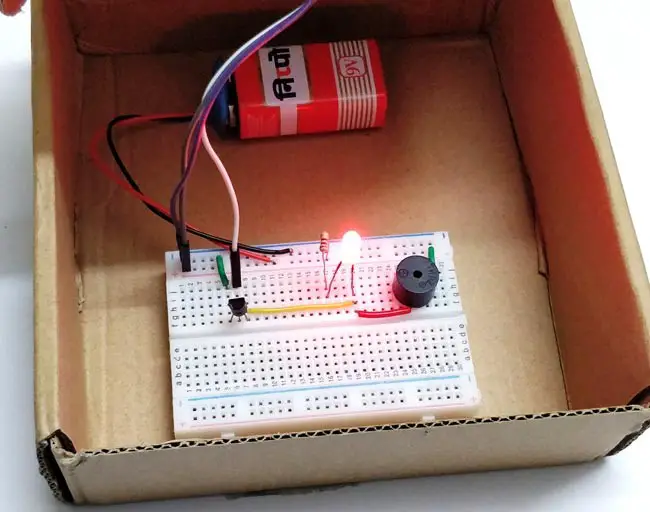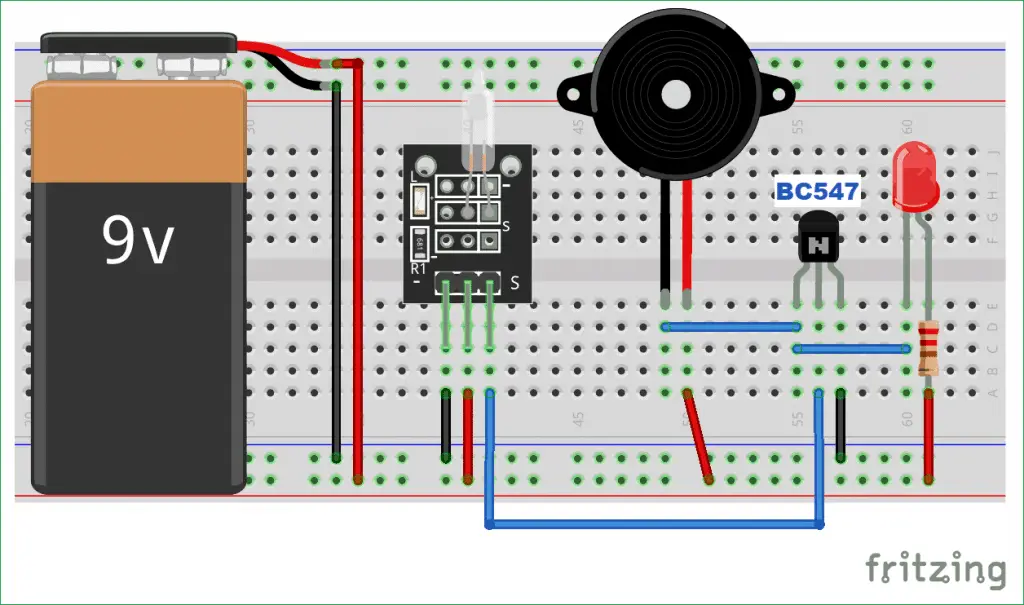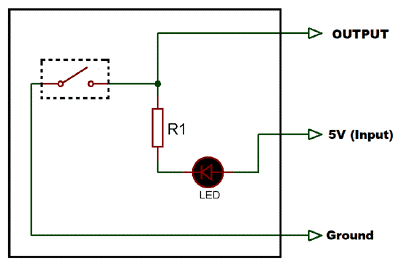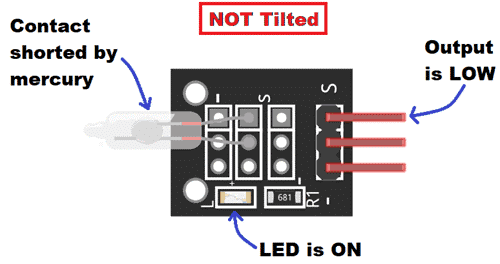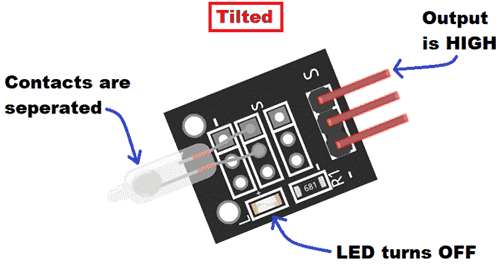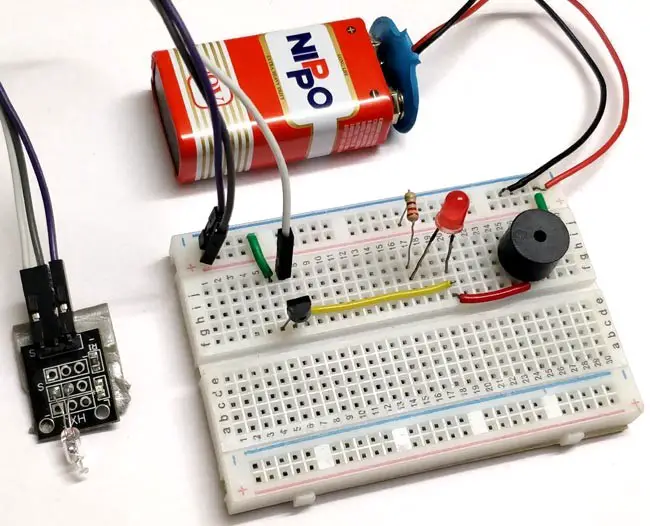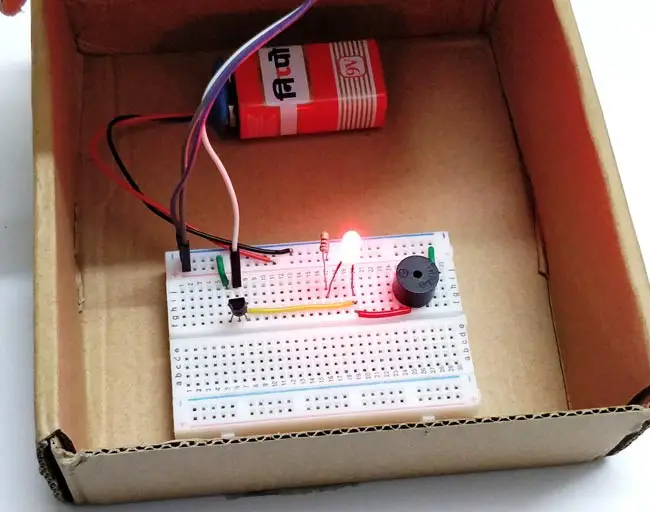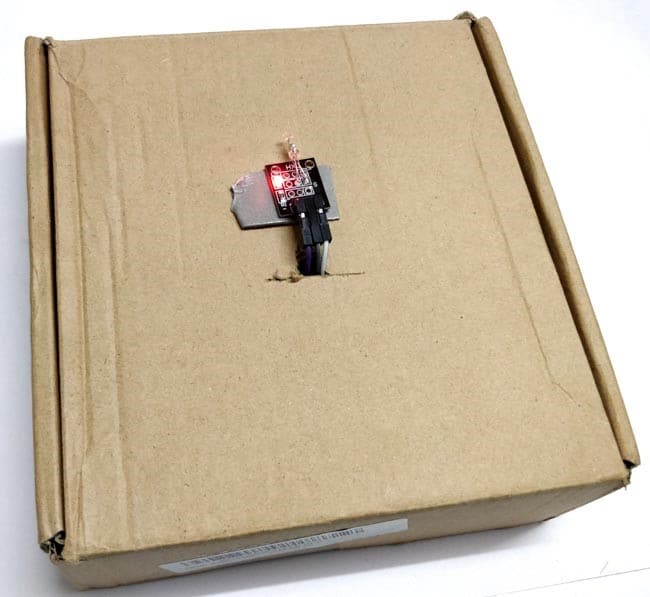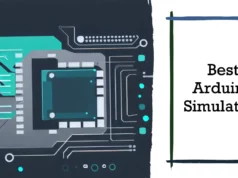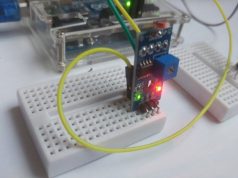A tilt sensor is a type of sensor that can open and close a circuit when it is tilted beyond a certain angle. It can be used in anti-tip devices, alarm circuits and many DIY projects.
There are different types of tilt sensor modules used to sense tilt, and modules can have ball switches or mercury switches. In this circuit, we use a mercury-based tilt sensor
Hardware Requirements
- Mercury Switch / Tilt Sensor View on Amazon
- BC547-NPN transistor View on Amazon
- buzzer View on Amazon
- led View on Amazon
- Resistance – 220 ohms View on Amazon
- Battery 9v View on Amazon
- Breadboard View on Amazon
- Connecting wire View on Amazon
Make Connection
This is a Mercury switch-based tilt sensor module that provides a high level at its output pin when tilted. It requires 5V DC input. This is a three-terminal device consisting of input, ground, and output.
It has a glass tube consisting of two electrodes and a liquid mercury ball. The liquid mercury ball closes and opens the circuit when it is tilted in a specific direction. The work and internal structure of the module are as follows:
Tilt sensor work
First Conditions
Initially, when it is in the non-inclined position as shown in the figure below, it outputs a low-level output because liquid mercury completes the circuit by connecting the two electrodes. When the output is low, the onboard LED remains on.
2nd Case Tilted
When it is tilted in a particular direction or angle, liquid mercury can break the contact between the metal electrodes and the circuit opens. Therefore, we get high output in this case and the onboard LED turns off.
Working Criteria
At the beginning, the tilt sensor switch is closed, which means the output is low. According to this circuit, the output of the tilt sensor is now fed to the base terminal of the transistor BC547.
Whenever the sensor is tilted by an angle or tilt, the output goes high and triggers the NPN transistor to turn on. When the transistor is turned on, the current through the collector to the emitter begins to flow, and the LED and the buzzer connected to the collector terminal turn on.
To demonstrate the work of tilt sensors, we arranged a box. The circuit is placed inside the box and the tilt sensor is placed on top of the box. So, as long as the box is open, the sensor will tilt and the LED and buzzer will turn on. This can be a cool hobby item, such as an anti-theft box, alarm clock box or secret file box.

























